Navy Concludes EOC Westpac Deployment of MQ-4C Triton UAV

**************
ARLINGTON, Va.— The U.S. Navy is concluding the first deployment of a detachment of MQ-4C Triton high-altitude, long-endurance maritime intelligence, surveillance, reconnaissance and targeting (MISR&T) unmanned aerial vehicles, ending the Early Operational Capability deployment of the Triton, paving the way for the UAV’s Initial Operational Capability.
Unmanned Patrol Squadron (VUP) 19, home-based at Naval Air Station Jacksonville, Florida, deployed two MQ-4Cs to Andersen Air Force Base in Guam in 2020 to provide MISR&T for the U.S. 7th Fleet while developing the concept of operations and the tactics to refine the Triton’s operations. The detachment operated from Guam; Naval Air Facility Misawa, Japan; and Marine Corps Air Station Iwakuni, Japan, the Navy said in a March 16 release.
The two MQ-4Cs deployed from VUP-19’s maintenance base in Naval Air Station Point Mugu, California. While deployed, the maintenance detachment moved to Naval Station Mayport, Florida, which is near the squadron’s operations center in Jacksonville. One of the two deployed Tritons arrived in Mayport in December to be used for training.
The two deployed Tritons were of the baseline Integrated Functional Capability (IFC) 3 configuration. The squadron has since received newer versions in the IFC 4 configuration, which are equipped with a more capable sensor suite that will allow them to replace the Navy’s fleet of EP-3E Orion electronic reconnaissance aircraft. The MQ-4C will supplement the Navy’s P-8A Poseidon maritime patrol aircraft.
VUP-19 is scheduled to bring the Triton to Initial Operational Capability later in 2023 when it deploys a full “orbit” of Tritons to the 7th Fleet’s Task Force 72. With a full orbit, a squadron detachment will be able to maintain a Triton on patrol 24/7.
Last October, Seapower reported that Vice Adm. Karl Thomas, commander, U.S. 7th Fleet, said the fleet is working to build up an orbit “to learn our way through some of the capabilities that an EP-3 [Aries II Orion electronic reconnaissance aircraft] might bring back. It will be a different way of processing the information than we do with our EP-3s, so we’re working as a Navy to see how we seamlessly transition.”
“VUP-19 plans to introduce this capability to more fleet areas around the globe, paving the way for future Navy unmanned systems,” the Navy release said.
USS ARLEIGH BURKE (DDG 51) RECEIVES SERVICE LIFE EXTENSION

Release from Naval Surface Force Atlantic Public Affairs
*****
14 March 2023
NAVAL STATION NORFOLK —
OPNAV N96 recently approved a five-year service life extension for USS Arleigh Burke (DDG 51).
First-in-class Arleigh Burke’s estimated service life was 35 years, expected to expire in FY 2026, but efforts began early last year to request additional service time for the ship. The approval extension carries the ship out through FY 2031 now, when the ship will be 40 years old.
According to Rear Adm. Brendan McLane, commander, Naval Surface Force Atlantic, the extension is a testament to the success of the DDG 51 program as a whole and is an example of the Navy’s enduring relationship with industry partners.
“DDG 51’s are the best warships in history. They demonstrate that there are no limits to what we can accomplish with a strong American Navy-industrial partnership,” McLane said. “Arleigh Burke-class destroyers are the backbone of the Navy’s surface fleet and critical to the Nation and the Navy today and long into the future.”
A DDG modernization program is underway to provide a comprehensive mid-life upgrade that will ensure the DDG 51 class possesses the latest long-range fires and terminal defense capabilities. The modernization changes are also being introduced to new construction ships to increase the baseline capabilities of the newest ships in the class, and to provide commonality between new construction ships and modernized in-service ships. The goal of the DDG modernization effort is to increase warfighting capabilities and drive commonality, which enable these ships to remain relevant, to their service life, against current and future threats.
After 30 years in Norfolk, Va., Arleigh Burke shifted homeports to Rota, Spain, on March 26, 2021, to be forward-deployed in U.S. Sixth Fleet. The ship arrived at Naval Station Rota on April 11, 2021, and is on its third patrol.
SURFLANT mans, trains and equips assigned surface forces and shore activities, ensuring a capable force for conducting prompt and sustained operations in support of United States national interests. The SURFLANT force is composed of nearly 80 ships, 17 pre-commissioning units, and more than 30 shore commands.
Release from General Dynamics Electric Boat
**************
Statement from General Dynamics Electric Boat President Kevin Graney Regarding the AUKUS Agreement
GROTON, Conn. (March 13, 2023) – Today, the United States, United Kingdom and Australia announced the trilateral AUKUS partnership, which will provide Australia with a conventionally armed, nuclear-powered submarine. General Dynamics Electric Boat has a long history of leadership in the design and construction of nuclear submarines from the beginning of naval nuclear propulsion with the USS Nautilus (SSN 571).
“We look forward to working with the Navy and our industry partners to use our knowledge and expertise to support Australia’s acquisition of nuclear submarines and the development of that country’s shipbuilding infrastructure. The AUKUS agreement underscores the critical role submarines play in the defense of our nation and our allies and calls attention to the importance of continuing to grow our submarine industrial base here in the United States,” said Kevin Graney, president, General Dynamics Electric Boat.
Northrop Grumman Offers Battle Management, Command and Control Expertise for U.S. Navy’s E-XX TACAMO Program
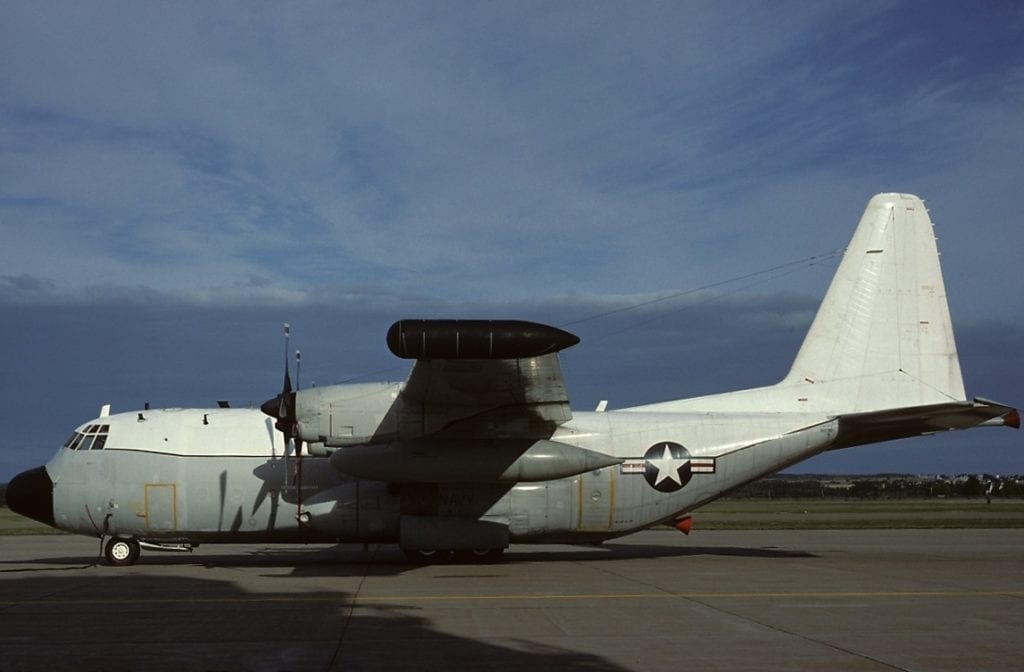
*****
MELBOURNE, Fla. – Mar. 15, 2023 – Northrop Grumman Corporation (NYSE: NOC) is leveraging its weapons system integration and battle management leadership to compete for the U.S. Navy’s E-XX TACAMO fleet of aircraft systems.
The Navy’s E-XX TACAMO aircraft will be based on the C-130J platform, and provides connectivity between the National Command Authority and ballistic submarines capable of delivering nuclear weapons. The Navy currently operates a fleet of E-6B Mercury aircraft to provide survivable, reliable and endurable airborne command, control and communications between the National Command Authority and U.S. strategic and non-strategic forces. The Navy intends to replace the E-6B fleet with the E-XX to modernize this critical strategic deterrent mission.
“Our extensive experience integrating aircraft and mission systems, combined with our expertise in creating operationally ready solutions in support of the nuclear enterprise, makes Northrop Grumman the optimal partner to deliver the Navy’s E-XX TACAMO weapon system” said Janice Zilch, vice president, multi-domain command and control programs, Northrop Grumman. “As we’ve demonstrated with the Navy’s E-2 programs, we have been a longtime partner in helping the Navy meet its operational requirements. We will bring this expertise in helping the Navy deliver the E-XX TACAMO on time and optimized for this strategically important mission.”
For more than six decades, Northrop Grumman has delivered on the development, production and modification of the Navy’s E-2 Hawkeye system as the prime contractor, and continues to provide total mission assurance with proven solutions that are secure, survivable, multi-layered systems designed for total weapon system security.
“Our team has vast knowledge and expertise in delivering critical command and control, and nuclear enterprise capabilities,” said Henry Cyr, director, multi-domain command and control capture programs, Northrop Grumman. “We perform challenging work that has a real-world impact. You can see that on our legacy platforms, the platforms currently in operation, and the platforms we will deliver tomorrow.”
Northrop Grumman is a leading global aerospace and defense technology company. Our pioneering solutions equip our customers with the capabilities they need to connect and protect the world, and push the boundaries of human exploration across the universe. Driven by a shared purpose to solve our customers’ toughest problems, our 95,000 employees define possible every day.
Amphib Suppliers to Navy Cite Need for Consistency in Ship Orders
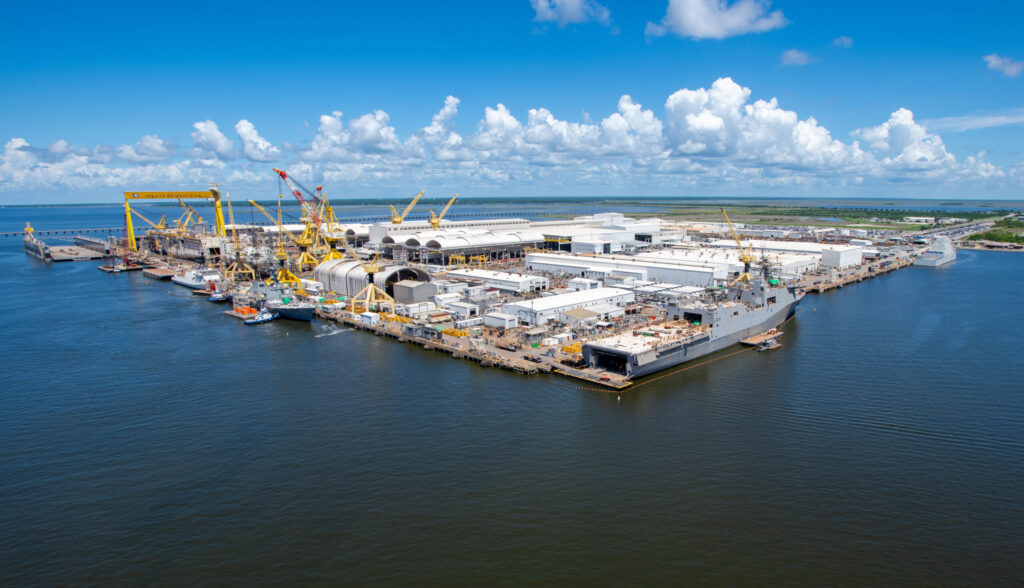
***********
ARLINGTON, Va. — The companies supplying components and materials to the shipbuilders who produce the amphibious warfare ships for the U.S. Navy say that consistency in ship orders brings economies to the work and stability to the industrial base.
“The last few years have been fits and starts on numerous ships in the budget,” said Said David Forster, chairman of the Amphibious Warship Industrial Base Council (AWIBC) and vice president for Global Strategy for Rolls-Royce North America Inc. in an interview with Seapower. “What we have not seen is a consistent shipbuilding program has been substantiated over a FYDP [Future Years Defense Plan] that allows our suppliers the ability to actually plan the work and apply some sort of business practices.”
The AWIBC “is an organization of amphibious warship suppliers who advocate for Congress to provide funding for the sustained and stable construction of amphibious warships vital to the mission of the U.S. Navy and U.S. Marine Corps. The amphibious warship industrial base is comprised of 614 companies in 38 states and 226 Congressional Districts provide parts worth over $1.78 billion for the construction of amphibious warships,” according to an email from the company.
“The industrial base can take a lot more work than it currently has,” Forster said. “In order to do that, you do need a plan which allows the industrial base to respond.”
Forster pointed out that the shipyards need time to ramp up to meet increased production requirements, by hiring and training more skilled workers, ordering more materials, and building or installing more infrastructure and equipment.
“I think the industrial base has the capacity for more shipbuilding,” he said. “It’s not the instantaneous response that everyone would like it to be. But, given enough lead-time, as well as enough information, the industrial base can do almost anything you really want it to do.”
Asked about the 31-ship floor set for the amphibious warship fleet, Forster did not take a position.
“We’re going to let that conversation play within the requirements-setting side of the house, whether that’s the warfare modelers, the Pentagon, Congress,” he said. “We’re standing by, ready to support whatever that requirement is, whether it’s 31 as [Congress] mandated last year in the NDAA [National Defense Authorization Act or whether it’s some other number. … We’re just hoping for consistency in shipbuilding rather than a particular number.”
The Navy’s proposed 2024 budget would fund completion of the fourth America-class amphibious assault ship (LHA), but the associated FYDP would not fund any Flight II San Antonio-class amphibious dock ships (LPDs) for at least five years. The ships are built at HII’s Ingalls shipyard in Pascagoula, Mississippi.
“If we can get the LPDs to about every two-year centers and LHAs to about every four-year centers, what that allows the industrial base to do is apply some of that economic strategy to offset inflation, come through with some investment on whether it’s new capability, new material, new processes, or allows them to invest in workers and retain those workers,” Forster said.
The proposed medium landing ship, scheduled to be funded in 2025 and designed to support Marine littoral regiments, would be an opportunity to strengthen the industrial base.
“That ship does offer opportunity to the other yards which are not the big hull builders,” Forster said. “From an industrial base [perspective], that’s pretty good. That helps sustain the industrial base. It also provides resources into the suppliers.”
“We remain committed to landing ship medium, and for LPD, we’re taking a look at the — the acquisition strategy moving forward, again, to make sure that we would have the right capabilities at the right price, and working with industry partners to put — put together that plan moving forward,” said Undersecretary of the Navy Eric Raven, briefing reporters March 13 on the 2024 budget. … We received a direction from OSD [the Office of the Secretary of Defense] but this will be an integrated team moving forward for that assessment.”
Rear Adm. John Gumbleton, deputy secretary of the Navy for Budget, also briefing the reporters, said the “intent here is not a either/or between a LPD or a medium landing ship, it’s a both, so it’s an end game, and we have time to get this right. … I believe the services are fundamentally aligned on this requirement. Both service chiefs like 31 [large and medium amphibious warships] as a requirement, both service chiefs like multi-year procurements, both service chiefs want to buy in a predictable future. And so, if we can do a study and actually lower the cost of this, that’s all to the good of the Department of the Navy and the Marine Corps.”
Navy Requests 9 Battle Force Ships, 88 Aircraft for Fiscal 2024
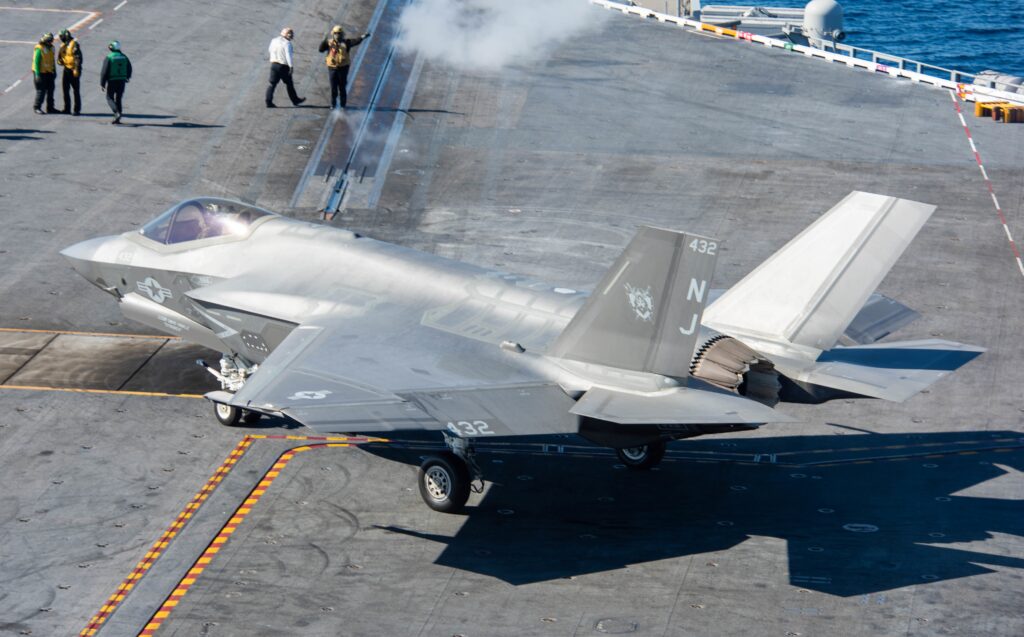
**************
ARLINGTON, Va. — The Navy Department is requesting funds for nine battle force ships and 88 aircraft in its fiscal 2024 budget proposal. The service also plans to decommission 11 battle force ships, some before the expiration of their service life.
The 2024 request at $255.8 billion represents an $11.1 billion or 4.5% increase over the 2023 budget enacted by Congress, according to Undersecretary of the Navy Eric Raven and Rear Adm. John Gumbleton, deputy secretary of the Navy for Budget, briefing reporters March 13 at the Pentagon.
Ships
The nine ships in the $32.8 billion ship construction request include one Columbia-class ballistic-missile submarine (SSBN), two Block V Virginia-class attack submarines (and advance funding for four more), two Flight III Arleigh Burke-class guided-missile destroyers, two Constellation-class guided-missile frigates, one John Lewis-class fleet replenishment oiler, and one new-design submarine tender.
Ship construction funding includes $5.8 billion for the first and second increments of the second Columbia-class, Wisconsin (SSBN 827). Funding also is requested for the Ford-class aircraft carrier program: the seventh increment for the third, Enterprise (CVN 80), and the sixth increment for the Dorie Miller (CVN 81).
The budget allocates $1.8 billion for the final increment of the Fallujah (LHA 9), the fourth America-class amphibious assault ship.
Of note, no funding is provided for any more Flight II San Antonio-class landing platform dock ships throughout the Future Years Defense Plan. Procurement of the new medium landing ship is planned for fiscal 2025 and the next-generation logistic ship is planned for 2027.
The proposed budget also funds the procurement of two LCU 1700-class utility landing craft; two used ships for conversion to sealift ships; and the service-life extension of one air-cushion landing craft (LCAC). Procurement of the LCAC 100-class ship-to-shore connector is gapped for 2024, with resumption planned for 2025.
Procurement of the Large Unmanned Surface Vessel and the Orca Extra-Large Unmanned Undersea Vehicle are funded for 2025 and 2026, respectively.
The Navy plans to retire 11 ships, including eight which would be retired before the normal end-of service life. The ships to be retired include: one Los Angeles-class attack submarine, five Ticonderoga-class guided-missile cruisers, two Independence-class littoral combat ships, and three dock landing ships.
Under the 2024 plan, the Navy’s battle force would decline by one ship to 293 ships.
Aircraft
The budget proposal included $17.3 billion for the procurement of 88 aircraft for the Navy and Marine Corps. This includes 16 F-35B and 19 F-35C Lightning IIs; 26 T-54A multi-engine training aircraft; two KC-130J Super Hercules tanker/transports; 15 CH-53K King Stallion heavy-lift helicopters; five MQ-9A Reaper unmanned aerial vehicles (UAVs); two MQ-4C Triton UAVs; and three MQ-25A Stingray UAVs.
Gumbleton said this budget request completes the procurement of the KC-130J (at 88 aircraft); the MQ-4C (at 22 aircraft), and MQ-9A (at 18 aircraft). The Navy’s stated requirement was for 68 MQ-4Cs, so this truncation represents a change in direction. The Navy Air Reserve has an unfunded requirement for 32 C-130J transports.
As expected, the Navy has not requested any F/A-18E/F Super Hornet strike fighters. It remains to be seen if Congress will again fund more Super Hornets out of concern for the Navy’s strike fighter shortfall.
The 2024 plan would leave the Navy and Marine Corps aircraft fleet at 3,998 aircraft, slightly under the 2023 total of 4,012.
Marine Corps Vehicles
The Marine Corps plans to procure 80 personnel variants of the Amphibious Combat Vehicle and 396 Joint Light Tactical Vehicles in 2024. The Navy/Marine Corps Expeditionary Ship Interdiction System (NMESIS) and Long Range Fires (LRF) programs would continue development and testing of the Remotely Operated Ground Unit Expeditionary (ROGUE) Fires vehicle, an “unmanned ground vehicle based on a Joint Light Tactical Vehicle (JLTV) chassis mounting a missile launcher system,” the Navy’s budget briefing book said. The 2024 budget souls continue procurement of NMESIS systems as well as funding for 90 Naval Strike Missiles and, for the LRF, 34 Tactical Tomahawk missiles.
Statement by Secretary of Defense Lloyd J. Austin III on AUKUS Optimal Pathway Announcement
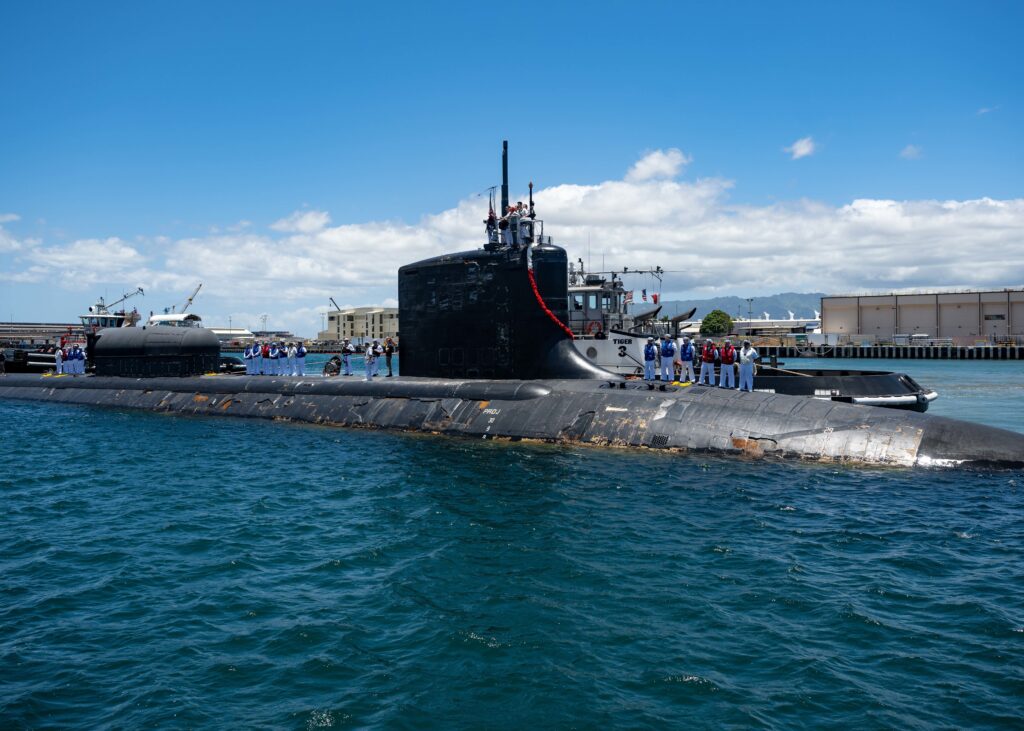
Release from the Secretary of Defense
*****
MARCH 13, 2023
Today, I was honored to join President Biden, Australian Prime Minister Albanese, and U.K. Prime Minister Sunak as they announced the AUKUS Optimal Pathway, a commitments-based, phased plan for Australia to acquire conventionally-armed, nuclear-powered submarines. This is the next step forward in the transformational partnership among our three great democracies.
In September 2021, the United States, Australia, and the United Kingdom laid out an ambitious vision for our countries that will strengthen our combined military capabilities, boost our defense industrial capacity, enhance our ability to deter aggression, and promote our shared goal of a free and open Indo-Pacific. AUKUS is a shared, long-term investment that will allow us to build defense advantages that endure for decades to come.
One of the most important parts of this partnership is increasing each of our countries’ submarine capabilities. Under the first phase of the Optimal Pathway, the United States and the United Kingdom will immediately increase port visits of conventionally-armed, nuclear-powered submarines in Australia and then, as early as 2027, will begin rotating through Australia under Submarine Rotational Force-West. In the next phase, the United States intends to sell three Virginia-class submarines to Australia in the 2030s, with the potential to sell up to two more if needed. Finally, Australia and the United Kingdom will develop and deploy SSN-AUKUS, a new conventionally-armed, nuclear-powered submarine that incorporates critical U.S. technologies. Each phase of the Optimal Pathway will set the highest nuclear nonproliferation standards.
We’re also working to strengthen our countries’ industrial bases; to eliminate barriers to information-sharing and technological cooperation; and to develop and deliver advanced capabilities in such areas as artificial intelligence, hypersonics, and maritime domain awareness. All these investments will allow us to work more closely with our valued and highly capable allies to deter aggression in the Indo-Pacific—a region whose future is crucial for U.S. national security and the rules-based international order that makes us all safer.
I would like to thank the many public servants in all three proud democracies whose hard work has made this historic announcement possible. I look forward to working with my team and with our Australian and British counterparts to continue to move toward our shared vision of a stable, secure Indo-Pacific and an open world of rules and rights.
Navy Accepts Delivery of Ship to Shore Connector, Landing Craft, Air Cushion 105
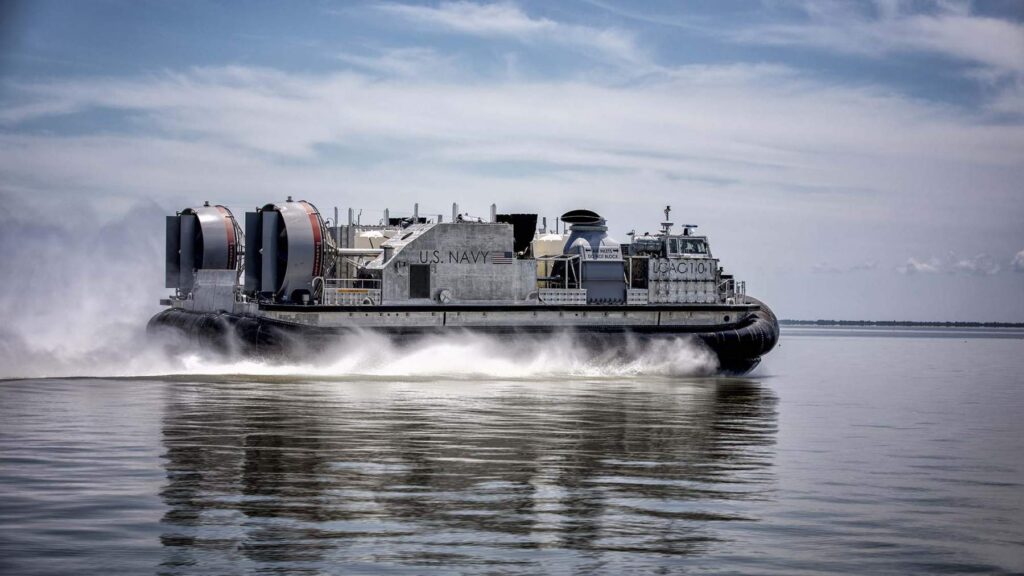
Release from Naval Sea Systems Command
**************
By Team Ships Public Affairs
SLIDELL, LA – The Navy accepted delivery of the next-generation landing craft, Ship to Shore Connector (SSC), Landing Craft, Air Cushion (LCAC) 105, March 8.
LCACs are built with configurations, dimensions, and clearances similar to the legacy LCACs they replace – ensuring that this latest air cushion vehicle is fully compatible with existing well deck-equipped amphibious ships, the Expeditionary Sea Base and the Expeditionary Transfer Dock. LCACs are capable of carrying a 60-75 ton payload. They primarily transport weapon systems, equipment, cargo, and assault element personnel through a wide range of conditions, including over-the-beach.
“LCACs are a critical tool for the Navy, the Marine Corps, and all of our warfighters,” said Amphibious Assault and Connectors Program Manager, Program Executive Office (PEO) Ships, Capt. Jason Grabelle. “This delivery comes at an important time for the fleet, and their inclusion will only strengthen our posture.”
The delivery of LCAC 105 comes after completion of acceptance trials conducted by the Navy’s Board of Inspection and Survey, which tested the readiness and capability of the craft to effectively meet its requirements.
Textron Systems of Slidell, Louisiana is currently in serial production on LCACs 107-115.
As one of the Defense Department’s largest acquisition organizations, PEO Ships is responsible for executing the development and procurement of all destroyers, amphibious ships, special mission and support ships, boats and craft.
NAVFAC Pacific awards $2.8-billion contract task order for Pearl Harbor dry dock replacement
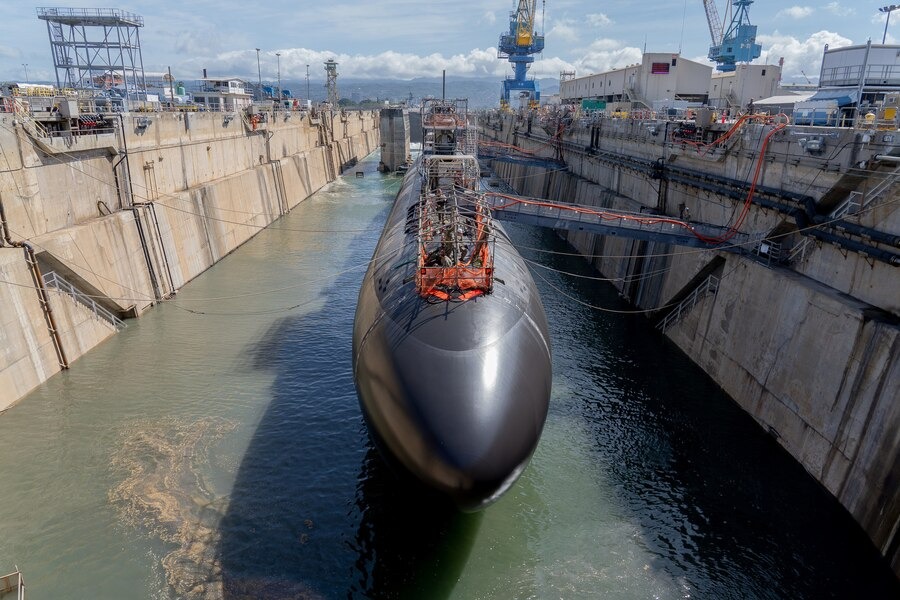
Release from Naval Facilities Engineering Systems Command
*****
JOINT BASE PEARL HARBOR-HICKAM – Naval Facilities Engineering Systems Command (NAVFAC) Pacific awarded a $2.8-billion task order under a previously-awarded indefinite-delivery/indefinite-quantity multiple-award construction contract to Dragados/Hawaiian Dredging/Orion JV, based in Honolulu, Hawaii, to replace Dry Dock 3 at Pearl Harbor Naval Shipyard and Intermediate Maintenance Facility (PHNSY & IMF) March 10.
The planned five-year project will construct a graving dock, to be designated Dry Dock 5, in order to support PHNSY’s ability to continue serving the Navy decades into the future by maintaining and modernizing the U.S. Pacific Fleet’s nuclear-powered submarines.
“As part of the Navy’s Shipyard Infrastructure Optimization Program (SIOP), replacing Dry Dock 3 at Pearl Harbor Naval Shipyard is a critical enabler of increased naval capability,” said Pete Lynch, program executive officer for Industrial Infrastructure, who oversees SIOP. “This project is a key investment in increasing capacity and modernizing our nation’s public shipyards through upgraded dry docks and facilities, new equipment, and improved workflow.”
Dry Dock 3 at PHNSY & IMF will become functionally obsolete once the Navy’s Los Angeles-class submarines are no longer in service. The dry dock, built in 1942, cannot service Virginia-class submarines or larger surface ships.
“We look forward to working with Dragados/Hawaiian Dredging/Orion JV, Pearl Harbor Naval Shipyard, and all our stakeholders on this project over the next several years in order to deliver this critical capability to the Fleet,” said Capt. Steve Padhi, commanding officer of Officer in Charge of Construction (OICC) Pearl Harbor Naval Shipyard. “The project team and cooperating agencies have gone above and beyond to set the conditions for success. We have incorporated lessons learned and best practices from other dry dock projects and field offices across the Navy, and we have consulted with our construction contractors early in order to confidently meet the requirements we’ve been given. My OICC team and I are ready to get started on this historic effort.”
The Navy is investing heavily in shipyard infrastructure for nuclear-powered warships. The Navy established SIOP to increase throughput at the four public shipyards by updating their physical layout, upgrading and modernizing their dry docks, and replacing antiquated capital equipment with modern tools and technologies.
SIOP is a holistic investment plan that when fully executed will deliver required dry dock repairs and upgrades to support current and planned future classes of nuclear-powered aircraft carriers and submarines, optimize workflow within the shipyards through significant changes to their physical layout, and recapitalize industrial plant equipment with modern technology that will substantially increase productivity and safety.
The full contract announcement is available at:
https://www.defense.gov/News/Contracts/Contract/Article/3326241/